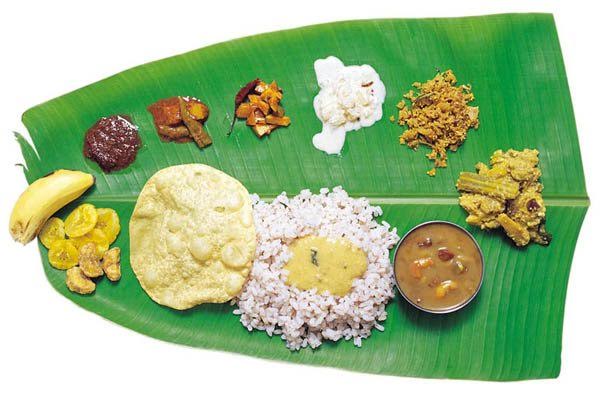
Organic Food for Improving Quality of Life
By Addoor Krishna Rao
President, Organic farmer Consumer Forum
You can easily make a survey among your relatives, friends and residents of your locality, about their health condition. The findings will be an eye-opener. You will find that many people are suffering from a variety of health problems, decreasing immunity and cancer.
Cause of bad health
Cause of our health problems is the quality of food we eat. It has deteriorated during the last 50 years. When we look back, we realise that till 1960s, crops were grown in our country by following traditional practices which were based on organic farming principles. Green manure, compost made by using dung and urine of dairy animals (cows & buffaloes) and ash were the main sources of nutrients for the crops i.e. grains, vegetables and fruits. Whenever insects or diseases attacked the crops, farmers were using traditional (desi) methods to control them. For example, lime, salt, ash, tobacco or turmeric powder, extracts of garlic or chilly or medicinal plant leaves were used.
Now, the cultivation practices followed by our farmers have completely changed. Introduction of chemicals in agriculture, in the name of “green revolution” in 1960s signalled beginning of the change. Then, as farmers also became profit motivated, they started applying more and more chemical fertilizers to the crops.
Now a days, cultivation of any crop starts with chemically treated seeds or seedlings. Consequent to the application of chemical fertilizers and pesticides, earthworms and micro-organisms in the soil are killed and soil has lost fertility. Hence, the farmers are compelled to apply chemical fertilizers to the soil (in granule or liquid form). To prevent or control insect pest attack or disease attack, farmers indiscriminately apply chemical pesticides. We have ignored the fact that these poisonous chemicals can kill people as they kill the insects.
One more issue of concern is increasing resistance of pests and disease-causing micro- organisms to the pesticides. In the case of human beings, there is a gap of 25 to 30 years between two generations. But, in the case of pests and micro organisms, this gap is a few hours or days. Their survival instinct is strong and they develop/ increase resistance to poisonous pesticides from one generation to another.
As a result, the farmers are not able to control the pests and diseases by applying the same quantity of pesticides. Therefore, the farmers go on increasing the quantity of pesticides applied per acre of crop, year after year. Apart from that, they use stronger (i.e. more poisonous) pesticides to control the pests and diseases. “The Violence of Green Revolution”, the book written by Dr. Vandana Shiva, has exposed the dangers posed to human beings by the use of chemical fertilizers and pesticides in agriculture.
Poison in our food plates
In this situation, as consumers of grains, vegetables and fruits we should ask a simple question: What happens to tons of poisonous pesticides applied to the crops? The answer is also simple: A large portion of that enters our body through the food we eat.
“Monitoring of Pesticide residues” was launched by Govt. of India in 2005. The findings of the latest report published in October 2015 are as shocking as the findings of the reports of the previous years. The samples collected in 2014-15 were analysed by 25 laboratories. The results clearly indicate that a significant number of the samples of vegetables, fruits, rice, wheat, pulses, mild, fish, meat, egg, tea, water and other food items (collected from various retail and wholesale outlets across the country) contain residues of deadly pesticides.
According to the report released in October 2015 by the Ministry of Agriculture, the residues of pesticides were detected in 18.7% of the samples. Out of the 20,618 samples analysed, residues of non-approved pesticides were detected in 12.5% of the samples. These residues (of non-approved pesticides) were detected in 1,180 vegetable samples, 225 fruit samples, 732 spice samples, 30 rice samples and 43 pulses samples. In the laboratory analysis, the non-approved pesticides like acephate, bifenthrin, acetamiprid, triazopos, metalaxyl, malathion, carbosulfan, profenofos and hexaconazole, among others, have been detected.
The solution is in your hands
Is there any solution to the problem of poisonous food? Yes, it is in your hands: Eating poisonless food or food produced by organic farming.
Where you can find such poisonless food? In all the metros shops selling organic food are becoming popular. For example: iKethi in Mumbai, Urban Farmers League and The Altitude Store(TAS) in New Delhi, The Urban Farmers (TUF), Yogi Farm in Goa etc. The number of organic farming products available for sale at The Altitude Store in New Delhi is 3,500.
In Bengaluru, about 275 shops are selling organic grains/ vegetables/ fruits and value added food products.
Since May 2014, “Savayava Krishika Grahaka Balaga” (Organic Farmer Consumer Forum) is conducting “Savayava Utpanna Sante” (Organic Produce Sales) on Sundays at the side of Panje Mangesha Rao Road in Mangaluru. The weekly “Sante” is held on the first four Sundays of every month. About 1,000 consumers visit the “Sante” and purchase vegetables, fruits and grains. The speciality of the ‘Sante” is that the growers themselves sell their produce directly to the consumers and middle-men are not involved. As a result, the farmers get the best price for their produce and the consumers get the best quality poison-less food. Within a short time the “Sunday Sante” of the Forum has become very popular in Mangaluru, coastal city of Karnataka State.
Address: Organic Farmer Consumer Forum
"Suma", 5th Cross Road, Bejai New Road, Mangaluru 575004 Karnataka State, India
E-mail: savayavabalaga@gmail.com
